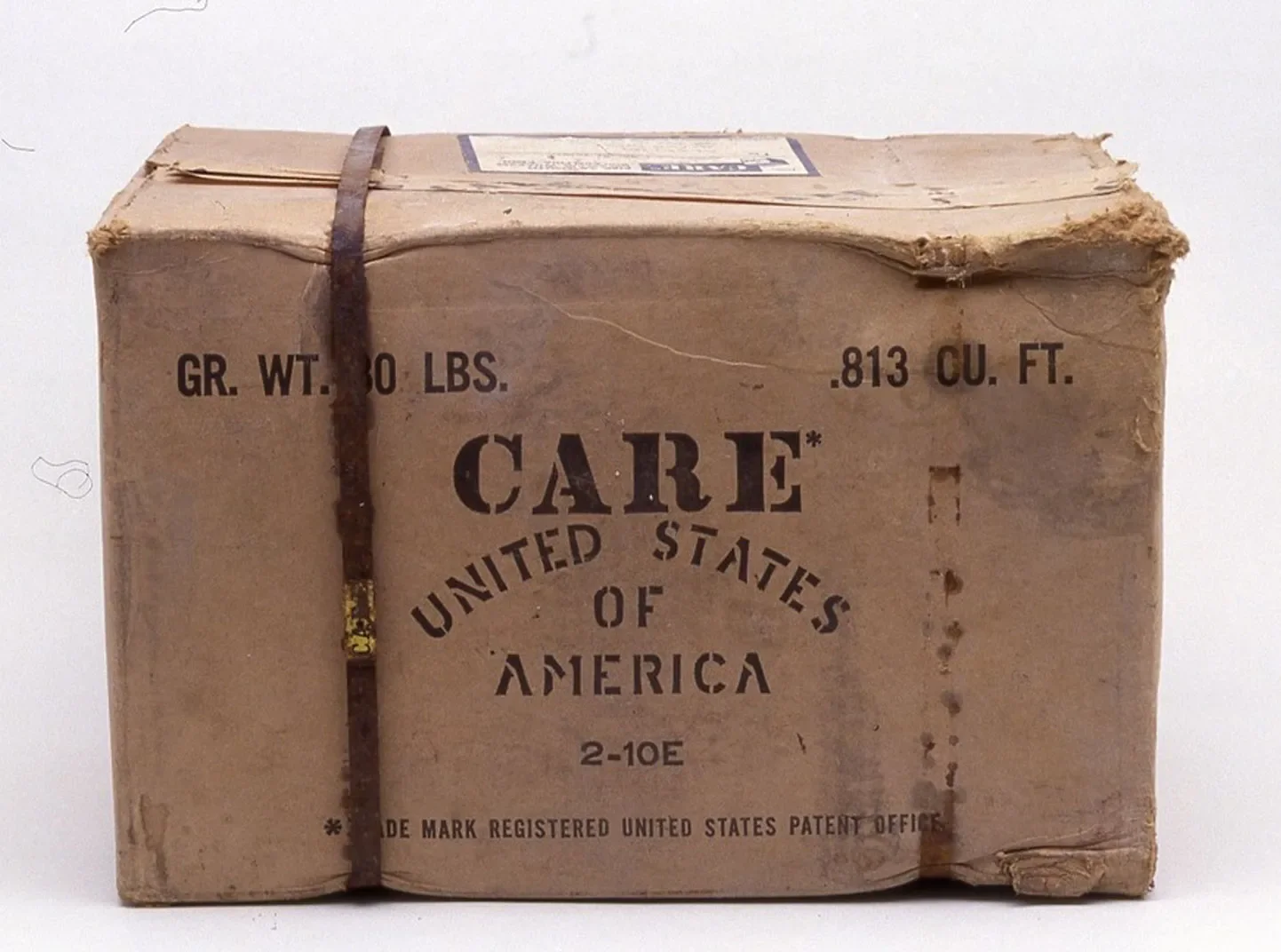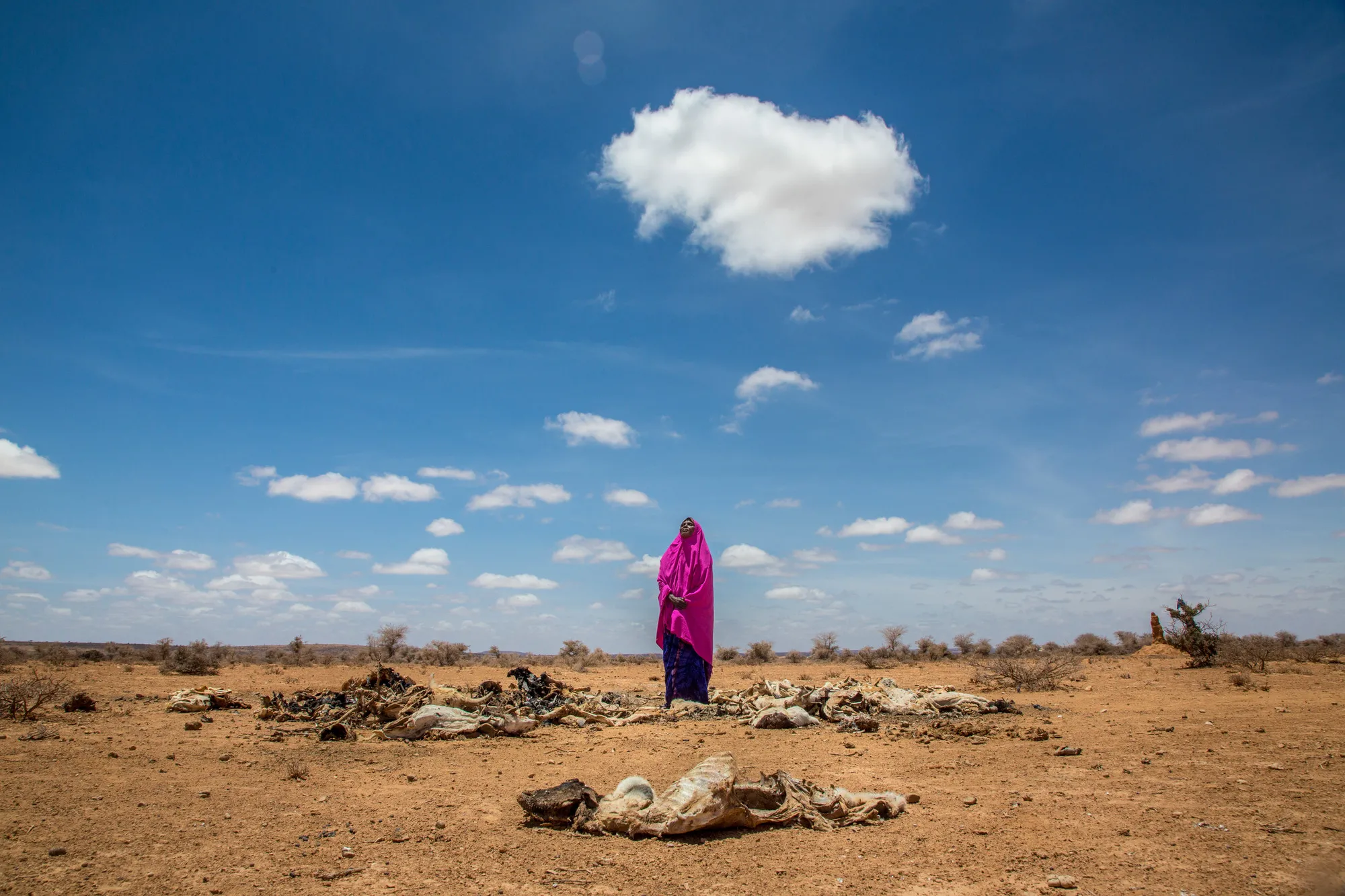(Somalia, March 16, 2022) – Under the blistering heat, and being heavy with child, 28-year-old Amina walked over 100 kilometers for 11 days with her children as life at home had become unbearable. This was as a result of losing all their 50 cows and 30 goats, their family’s sole source of livelihood, due to the ongoing drought in Somalia. Amina found refuge at an Internally Displaced Peoples (IDP) camp in Lower Juba and has since then not been able to communicate with her husband who she left behind.
“Sometimes my children go to bed hungry as I have nothing to give them and because their father is not here to help as I am pregnant. We have lost everything to this drought. Life used to be easy for us when we had our livestock. We could sell some to buy what we need. We ran out of water and pasture, and it was sad seeing all our livestock dying right in front of our eyes. Now we don’t even know what our next meal is going to be and when we will have it”, said Amina.
Amina’s story is one that more than 4.3 million Somalis, directly affected by the drought that has been brought about by the extreme effects of climate change, can relate to. From failed rains that have led to the loss of water for drinking and farming to swarms of locusts that decimated farms and pastures, millions of people have been left hungry and thirsty. Thousands more have been displaced from their homes as they search for food and water for sustenance.
Adow,70, has been a pastoralist all his life and owned more than 300 livestock. The drought annihilated his herd, and he is now left with only 20 goats. Adow and his family had to make the difficult decision to leave their home and relocate to an IDP camp relying on handouts from humanitarian organizations.
“It was painful leaving my life behind, but I had no choice. I only had a donkey cart to transport my family to the camp. The most difficult decision was deciding if I should carry the little food that I had left or put my small frail children who could not walk on the cart. This drought has left us in a very difficult position, I don’t even know how we are going to survive” said Adow.
Somalia has seen a rise in people requiring life-saving assistance in the past three years. From 5.4 million in 2020, 5.9 million in 2021, to the current 7.7 million in 2022. This is against a backdrop of dwindling funding that has left humanitarian organizations struggling to provide much-needed interventions.The 2022 Somalia Humanitarian Response Plan requires US$1.46 billion to reach 5.5 million people across all 74 districts of the country but only US$47.5 million has been availed.
Iman Abdullahi, CARE Somalia Country Director says “We need to step up and support the people of Somalia so that we can avoid the impending humanitarian catastrophe. Most schools in IDP camps are becoming overcrowded by the day as more and more people arrive. CARE is particularly concerned about the plight of women and children. Reports indicate that 20% of girls are facing pressure from parents to marry early as a means of coping with the crisis. Also, 34% of women reported sexual violence as their biggest concern. Since February 2022, 80% of the people arriving at the camps are women and the elderly.
Our teams are currently in 51 IDP camps providing health support, nutrition, education, Protection and unconditional cash vouchers. We have so far reached 62,519 individuals, 31, 346 being female. More still needs to be done. The window to avert the looming catastrophe is closing fast and we are calling everyone to step in and support the humanitarian response so that we can save lives before it is too late.”
For More Information:
Rachel Kent
Senior Press Officer
Rachel.Kent@care.org

